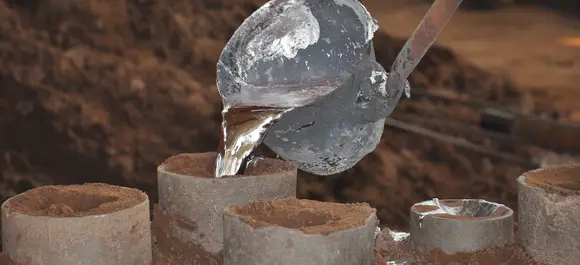Mobile:+86-311-808-126-83
Email:info@ydcastings.com
Exploring the Benefits and Techniques of Aluminum Casting in Modern Manufacturing
Aluminum Casting A Versatile Manufacturing Process
Aluminum casting is a highly versatile manufacturing process that enables the creation of complex shapes and components with a remarkable combination of strength, weight, and resistance to corrosion. This method has established itself as one of the leading techniques for producing aluminum parts across various industries, including automotive, aerospace, consumer goods, and machinery. The importance of aluminum casting lies not only in its ability to form intricate designs but also in its efficiency and the cost-effectiveness it brings to manufacturing.
The Aluminum Casting Process
The aluminum casting process involves pouring molten aluminum into a mold where it cools and solidifies into the desired shape
. There are several methods of aluminum casting, each suitable for different applications and production volumes1. Sand Casting This is one of the oldest and most widely used casting methods. It involves creating a mold from a mixture of sand and a binding agent. The mold can be easily shaped, allowing for the production of large and complex components. Sand casting is particularly suited for low to medium volume production runs.
2. Die Casting This process uses high-pressure to force molten aluminum into steel molds, creating durable and precise parts. Die casting is ideal for high-volume production because it offers excellent dimensional accuracy and surface finish. This method is commonly used in the automotive industry for producing engine blocks, transmission cases, and various other components.
3. Investment Casting Known for its ability to produce intricate shapes with excellent surface finishes, investment casting involves forming a wax pattern that is coated with a ceramic shell. Once the shell hardens, the wax is melted away, leaving a hollow mold for the molten aluminum. This technique is used for parts requiring high precision, often found in the aerospace and medical industries.
4. Permanent Mold Casting This method involves pouring molten aluminum into reusable metal molds. It allows for better dimensional control and surface quality than sand casting but may require more complex mold designs. Permanent mold casting is suitable for medium to high production volumes.
aluminum casting

Benefits of Aluminum Casting
Aluminum casting offers a host of advantages that make it a preferred choice for manufacturers. Firstly, aluminum's lightweight nature enhances fuel efficiency in vehicles and machines, making it an environmentally friendly option. Secondly, aluminum exhibits excellent corrosion resistance, which extends the life of the products made from it. This property is particularly valuable in industries like aerospace and marine, where components are exposed to harsh environments.
Moreover, the casting process itself is energy-efficient. Compared to other manufacturing methods, such as machining solid blocks of metal, casting utilizes less energy and generates less waste. This efficiency translates to cost savings that can be crucial for businesses looking to maintain competitive pricing.
Innovation and Future Trends
As technology advances, the field of aluminum casting continues to evolve. Innovative techniques, such as 3D printing and computer-aided design (CAD), are becoming increasingly integrated into the casting process. These tools enhance design flexibility and reduce lead times, allowing manufacturers to respond quickly to market demands.
Additionally, as sustainability becomes a driving force in manufacturing, there is a growing emphasis on recycling aluminum. The casting process can readily utilize recycled aluminum, reducing the need for virgin materials and contributing to lower environmental impact. This trend is gaining momentum across industries, with companies emphasizing eco-friendly practices.
Conclusion
Aluminum casting stands at the intersection of tradition and innovation. It is a crucial manufacturing process that combines the lightweight and durable properties of aluminum with advanced technologies to meet the needs of modern industries. As manufacturers continually seek ways to improve efficiency, reduce costs, and adhere to sustainable practices, aluminum casting will undoubtedly remain a vital part of the manufacturing landscape for years to come. Whether in the automotive, aerospace, or consumer goods sectors, the versatility and strength of aluminum castings will continue to drive progress and innovation in production techniques.
-
Why Should You Invest in Superior Pump Castings for Your Equipment?NewsJun.09,2025
-
Unlock Performance Potential with Stainless Impellers and Aluminum End CapsNewsJun.09,2025
-
Revolutionize Your Machinery with Superior Cast Iron and Aluminum ComponentsNewsJun.09,2025
-
Revolutionize Fluid Dynamics with Premium Pump ComponentsNewsJun.09,2025
-
Optimizing Industrial Systems with Essential Valve ComponentsNewsJun.09,2025
-
Elevate Grid Efficiency with High-Precision Power CastingsNewsJun.09,2025











